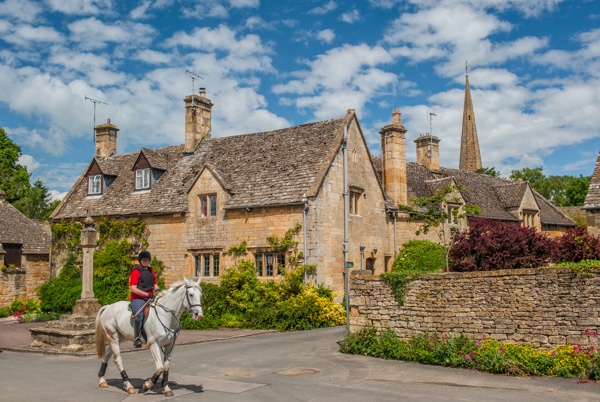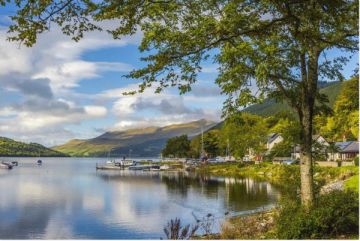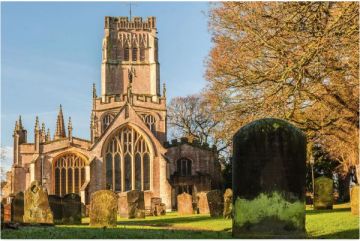
Gloucestershire is nebulously synonymous with the Cotswolds, a wonderful region of warm-toned stone cottages and delightful villages centred on the Cotswold escarpment. The escarpment itself runs for 100 miles from the outskirts of Bath north into Worcestershire.
Along the way, it takes in some of the best scenery in rural England. The Cotswold Way long-distance path runs the length of the region and provides an enjoyable way to explore the villages and byways of the region.
The peculiar charm of Cotswold villages owes much to the honey-golden colour of the limestone used to build its houses. But the stone itself is nothing without the charm of the villages themselves.
Places like Bibury, with its trout hatchery in the middle of the village, and Northleach, with its superb medieval church, have about them an air of relaxed charm.

Many Cotswold villages have suffered from an overabundance of tourists, and places like Bourton-on-the-Water may be crowded in the summer months. Yet the Gloucestershire Cotswolds boast so many delightful small villages that you are sure to find an uncrowded corner even at the height of the tourist season.
Stow-on-the-Wold ("where the wind blows cold"!), is the highest point in the Cotswolds. The scene of the last battle of the English Civil War, Stow is centred on a picturesque village green, complete with stocks used for punishing criminals in years gone by. Though the square around the green is now ringed with antique stores and tea shops, Stow is a delight. A short walk from the green brings you to the parish church, where the door is encased in a living tree!
Moving from the charm of villages to the urban delights of Georgian high society brings us to Cheltenham. In its day Cheltenham was a popular spa town, and it boasts as many fine Georgian and Regency buildings as the more visited Bath to the south. Nearby Chedworth is the site of perhaps the finest Roman villa in England.

Tewkesbury, now bestrewn with fine antique shops, boasts a superb abbey church surrounded by half-timbered Tudor buildings. A few short miles away is Winchcombe, yet another delightful Cotswold village, and home to Sudeley Castle, where Queen Katherine Parr ended her days.
Nearby Belas Knap is one of the finest Neolithic chambered tombs in England. A short drive from Belas Knap brings you to not one, but two, of England's finest gardens, Hidcote and Kiftsgate, while just down the road is Hailes Abbey, where the Cistercians housed a vial of Christ's blood to attract medieval pilgrims. After Henry VIII disbanded the monasteries in the 16th century the "blood" was revealed to be a mixture of saffron and honey!
The city of Gloucester itself suffers from the benefits of advancing civilization, but the Cathedral is superb, and the city boasts intriguing museums, including National Waterways Museum and the Museum of Advertising and Packaging. To the southwest lies Slimbridge, home of the Slimbridge Wildfowl and Wetlands Trust, where geese, swans, and other wildfowl breed in a protected environment.
More dramatic is Berkeley Castle, the grim medieval fortress that was the final prison for King Edward II. It was here, in a small, squalid room just off the main entrance to the castle, that the unfortunate Edward was cruelly murdered by his captors in 1327. The interior of the castle is blissfully original. There is a 14th century great hall built just inside the castle wall, and a lovely 16th century wooden screen graces one end of the hall.
Neighbouring areas:
More Photos
Related:
Cotswolds












